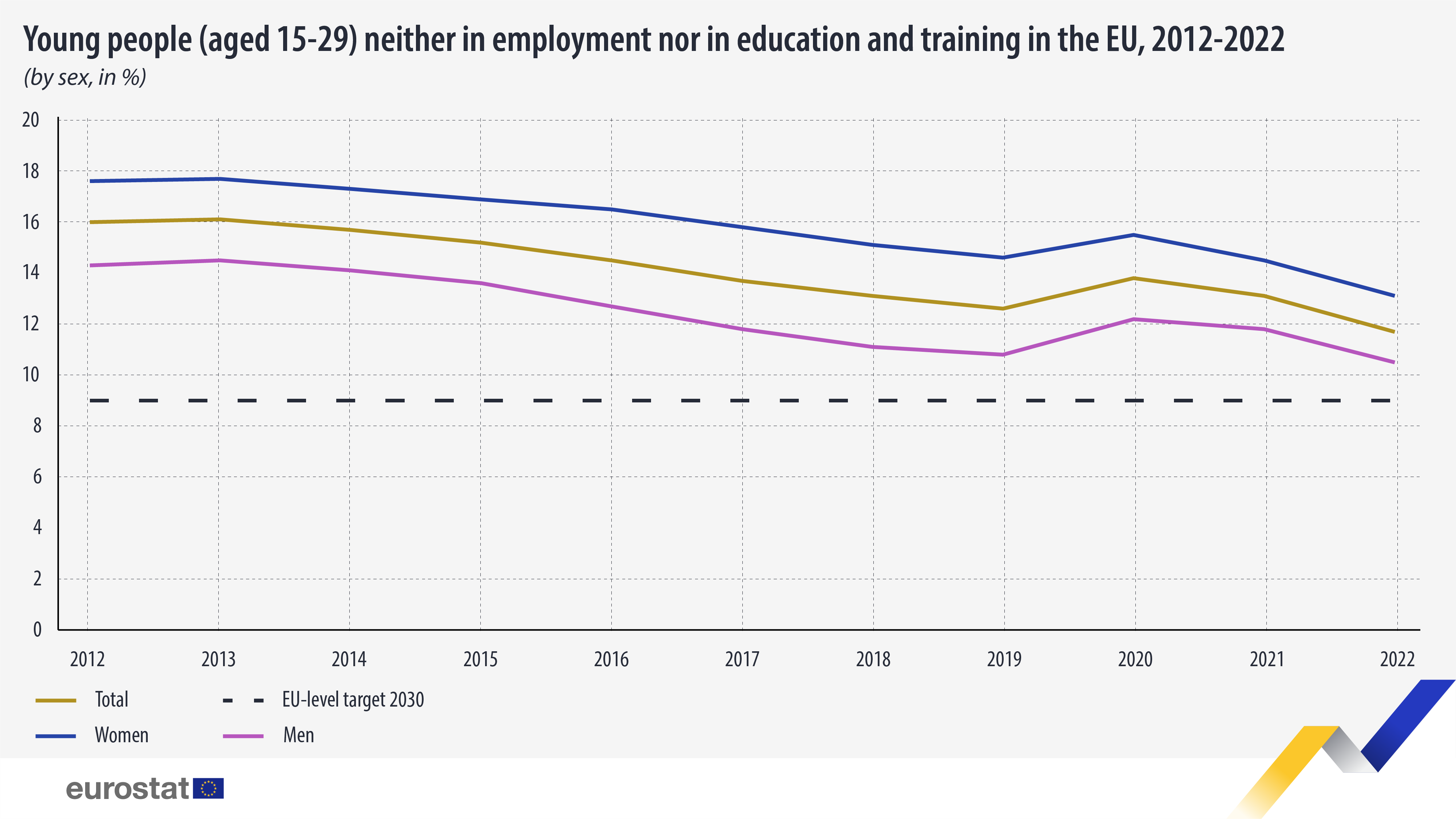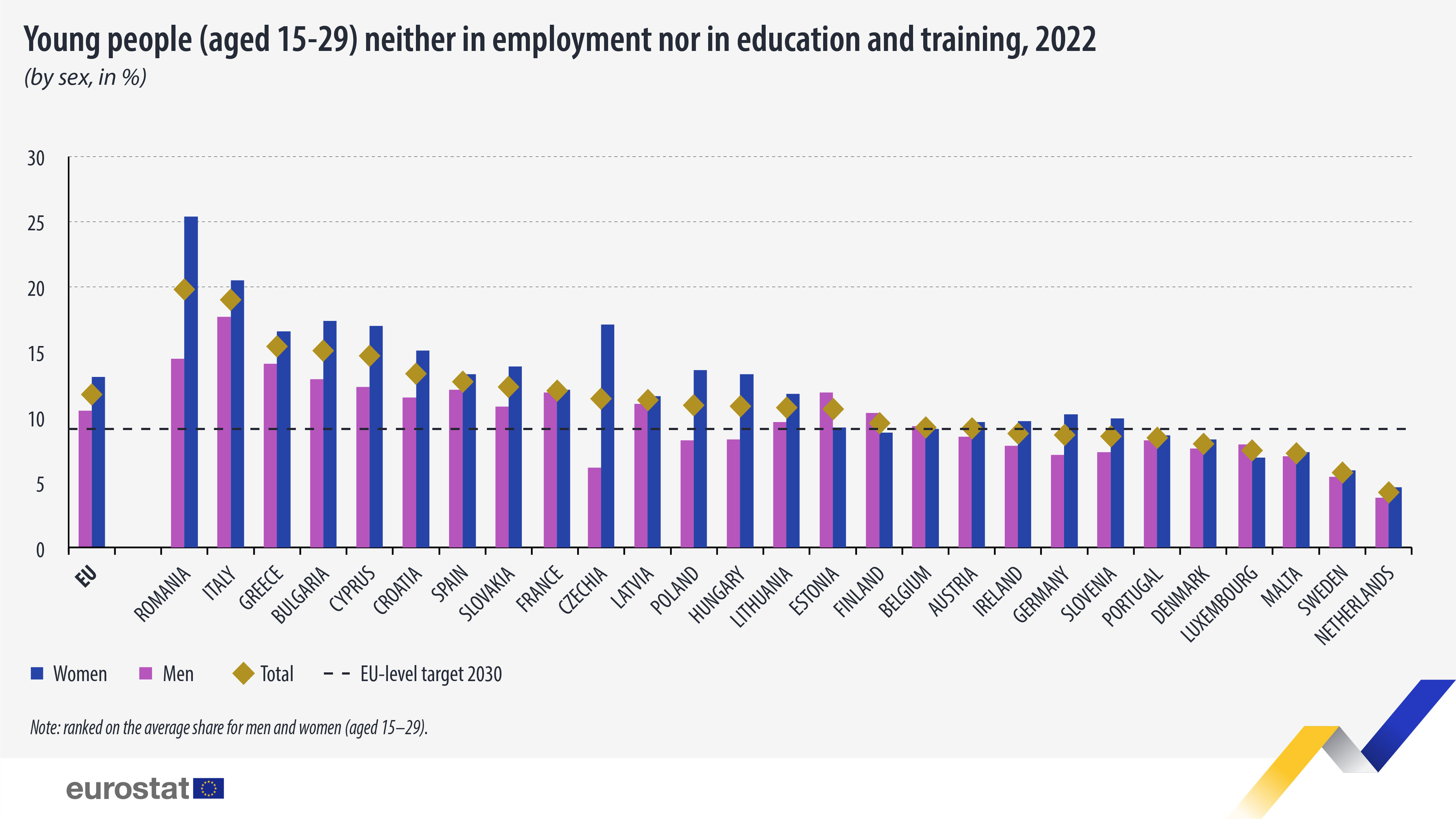Fewer young people neither employed nor in education

In 2022, more than one in ten (11.7%) young people aged 15 to 29 in the EU were neither in employment nor education or training (NEET), indicating a decrease of 1.4 percentage points (pp) compared with 2021.
During the last decade, there was a significant decrease in the share of NEET young adults. In 2012, the EU recorded a rate of 16.0%, which peaked in 2013 (16.1%) and then started a steady decrease. An exception occurred in 2020, when the indicator reached 13.8% during the pandemic (from 12.6% in 2019), but since then, it continued its decreasing trend, reaching 11.7% in 2022.
Reducing this rate is one of the targets of the European Pillar of Social Rights. The goal is to lower the rate of NEET young people aged 15-29 to 9% in 2030.
Source dataset: edat_lfse_20
The Netherlands registered the lowest share of NEETs
Across EU countries, there were wide variations in 2022 when looking at the NEET rates for the age group 15-29. The proportion of NEET in the EU ranged from 4.2% in the Netherlands to a share almost 5 times higher in Romania (19.8%).
Data show that, in 2022, a third of the EU members were already below the 2030 target of 9%, namely the Netherlands (4.2%), Sweden (5.7%), Malta (7.2%), Luxembourg (7.4%), Denmark (7.9%), Portugal (8.4%), Slovenia (8.5%), Germany (8.6%) and Ireland (8.7%).
More young women than men neither employed nor in education
In most EU members, there were differences between the shares of NEET young women and men. In 2022, 13.1% of young women aged 15–29 in the EU were NEETs, while the corresponding share among young men was 10.5%.
Source dataset: edat_lfse_20
The lowest NEET rates for young women and young men were both in the Netherlands: 3.8% for young men and 4.6% for young women.
In contrast, the highest NEET rate for men was recorded in Italy (17.7%), with the highest for women recorded in Romania (25.4%).
In four EU countries, the shares of NEET young women were lower than the associated share of men: Luxembourg (6.9% women vs 7.9% men), Finland (8.8% vs 10.3%), Belgium (9.1% vs 9.3%) and Estonia (9.2% vs 11.9%).
For more information
- Statistics Explained article on young people neither in employment nor in education or training
- Thematic section on education and training
- Database on education and training
Methodological notes
- The indicator on young people neither in employment nor in education and training (NEET) corresponds to the percentage of the population of a given age group and sex who is not employed and not involved in further education or training. It provides information on the transition from education to work and focuses on the number of young people who find themselves disengaged from both education and the labour market.
If you have any queries, please visit our contact us page.


